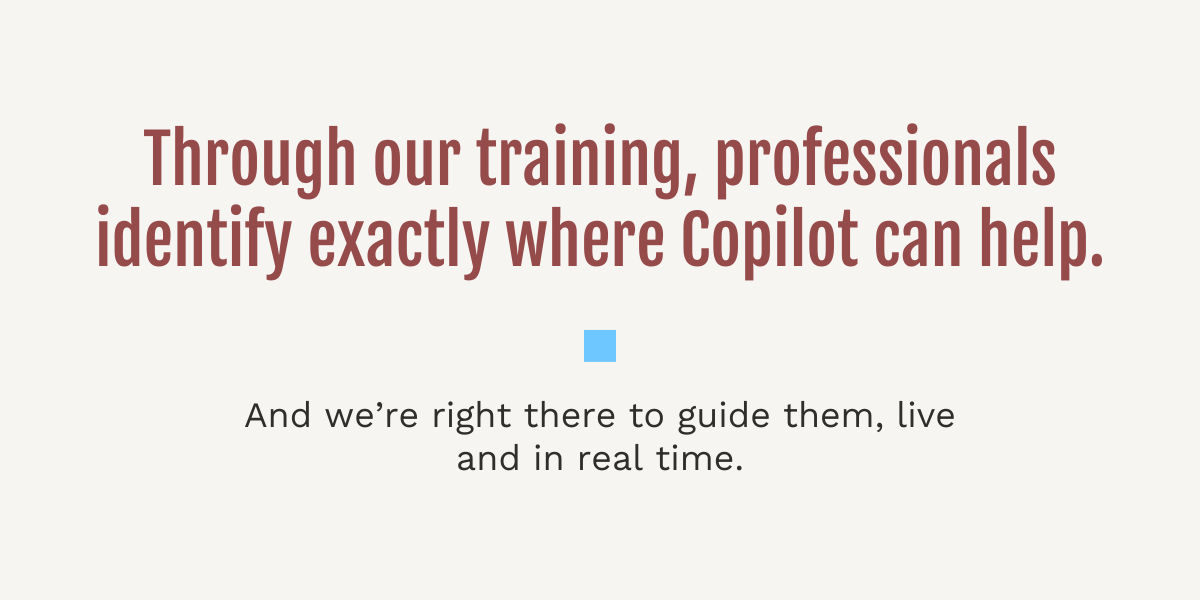You Don’t Just Roll Out Copilot. You Learn How to Use it.
The rollout happened. Microsoft Copilot was provisioned across your organization. Licenses were issued, the IT team checked the boxes, and users were told: it’s ready to go.
And then, like clockwork, the questions began.
“How do I actually use it?”
“What’s different now?”
“Why doesn’t this feel helpful yet?”
This is the part that gets skipped. Not because leaders don’t care, but because most assume the hard part was the install. But the real work, the part where your team learns how to use Copilot with fluency and clarity, starts after the tool shows up.
At VILAS, this is the gap we walk into. Not to explain what Copilot is, but to show people how to actually work with it in a thoughtful, confident, and purposeful way. Working with generative AI tools like Copilot is like learning a new language, and our training starts with the fundamentals.
Copilot isn’t the answer. It’s the instrument.
The biggest misconception about tools like Copilot is that their value lies in access. That once it’s turned on, the results will follow. But just like handing someone a piano doesn’t make them a pianist, installing Copilot doesn’t mean your team knows how to use it.
Copilot is not here to do the work for you. It’s here to work with you—to take your direction, your prompts, your clarity, and accelerate your capabilities. But that only happens if the person sitting in front of the screen knows how to lead the interaction. Training, then, becomes an essential component and the next phase of deployment.
Most teams aren’t unwilling. They’re unequipped.
When we meet with clients, it’s rarely about resistance. It’s about uncertainty. People want to use these tools, they just don’t know where to begin. Some try experimenting on their own. Others wait for formal instruction that never comes. Most end up somewhere in the middle: curious, but stuck. What’s missing isn’t motivation. It’s structure.
That’s where we come in. Our training isn’t theoretical. It’s not an orientation or a keynote. It’s real work, done live, with real people. We teach professionals how to think with AI, not just how to click through it. We show what works and what doesn’t, so that when they’re stuck, they’ll know the workarounds. And we do it by meeting them where they are—in the actual workflows, challenges, and communication habits they already rely on. Through our classes, professionals are able to pinpoint exact areas of responsibility where Copilot can assist, and we’re there to guide them through it in real time.
We built the VILAS Prompting Framework for exactly this reason: to give people a structured, repeatable way to communicate with tools like Copilot across the suite of Microsoft apps, including Outlook, Word, Teams, and Excel. Not just to save time, but to improve the quality of their work: sharpening ideas, surfacing information faster, and reducing the friction in daily tasks.
You paid for the tool. Now invest in the people.
Copilot isn’t cheap. And yet, many companies spend thousands licensing a tool they’ve barely introduced, let alone trained on. We’ve seen it firsthand: professionals frustrated by their lack of understanding, not because the tool lacks value, but because that value was never activated. Training closes that loop. It turns passive access into active capability. It creates a common language across teams. And it ensures that the investment you made doesn’t sit dormant in a toolbar, but becomes an asset your people actually use.
Because AI doesn’t create impact on its own. People do—when they’re equipped, supported, and trained to lead the conversation.
Forward-thinking organizations aren’t just enabling Copilot. They’re teaching people how to use it well.
What Prompting Really Means
And why you and your team needs to learn it now.
Read More



